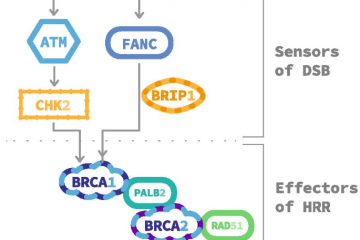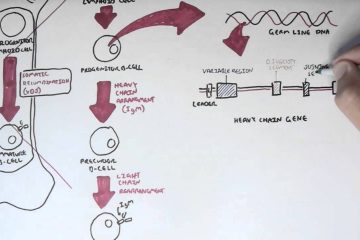Expected use
The genesis Real-Time PCR Coronavirus (COVID-19) CE IVD is intended to be used to achieve qualitative detection of COVID-19 viral RNA extracted from nasopharyngeal, oropharyngeal swabs and sputum from patients in association with a CE IVD collection system and the designated PCR platforms mentioned above. The kit is intended for use by trained laboratory personnel.
Storage and handling conditions
The genesis Real-Time PCR Coronavirus (COVID-19) CE IVD is shipped at room temperature but must be stored at -20°C upon arrival. If the protection kit packaging is damaged upon receipt, please contact Primerdesign for instructions. Attention should be paid to the expiration date specified on the package label and on individual tube labels.
Stability in use
The genesis Real-Time PCR Coronavirus (COVID-19) CE IVD should be stored in the original package and is stable for up to 1 month after resuspension if stored at -20°C but should not be used after the expiration date indicated on the package label and individual tube labels. When in use the kit components should be returned to the freezer immediately after use to minimize room time temperature. Repeated thawing and freezing should be kept to a minimum and should not exceed 5 freeze-thaw cycles. Components may be aliquoted into smaller volumes after resuspension, if necessary.
Identification of materials and devices required but not provided
1. Reagents
Appropriate nucleic acid extraction system and/or kit (refer to Section 9.1 „Sample preparation procedure‘).
2. Team
- PCR hood
- Tabletop centrifuge
- Vortex Mixer
- White Roche® LightCycler 480 Multiwell plate 96
- Bio-Rad® CFX96 White Multi-Well Plate 96
- Transparent Applied Biosystems® 7500 Real-Time PCR System Multiwell Plate 96
- Adjustable pipettes
- Pipette tips with filters
- Disposable gloves
- 1.5 ml microcentrifuge tubes for extraction
3. Real-time PCR machine
Appropriate real-time PCR instrument.
4. Facilities/Training Requirements
Samples must be handled in a biosafety level 2 facility, World Health Organization Provisional February 12, 2020 laboratory biosafety guidance should be followed. Testing for the presence of COVID-19 must be carried out in a properly equipped laboratory by staff trained in the relevant technical and safety procedures.
Background information
The goal is important to be screened for patients showing relevant symptoms of coronavirus. Reliable and regular diagnosis of individuals for this purpose will help ensure a reduction in the spread of infections, but also help to quickly treat infected patients. COVID-19 is a new contagious strain of coronavirus that emerged in Wuhan, China, in December 2019.
The virus is believed to be zoonotic in origin and likely spread from large shellfish and animal markets for human-animal contact in the city of Wuhan. The virus causes respiratory infection, with symptoms including fatigue, fever, shortness of breath, respiratory failure, kidney failure, and death.
As of this writing, February 2020, confirmed cases globally exceed 60,000. Patients can become infected with COVID-19 by person-to-person contact (through contact with a contaminated person or environment). Young and old (and other immunocompromised people) are at higher risk of serious complications; however, approximately 20% of infected people may develop a critical condition.
Product Description
The genesis Real-Time PCR Coronavirus (COVID-19) CE IVD Assay is an in vitro diagnostic test based on Real-Time PCR technology, developed for the specific detection of SARS-CoV-2 viral RNA. the probe system is based on the standard hydrolysis probe system known as TaqMan® technology. The COVID19-specific probe is labeled with the FAM fluorophore and the internal control is labeled with the HEX fluorophore.
The assay includes an internal control to identify possible PCR inhibition, to measure the purity of the extraction and to confirm the integrity of the PCR run. Real-time PCR technology uses polymerase chain reaction (PCR) for the amplification of target sequences and targets specific probes for the detection of amplified RNA. the probes are marked with indicator dyes and fluorescent quenchers.
- Positive control
Positive Control Template (PCT) contains standardized concentrations of SARS-CoV-2 RNA (Coronavirus COVID-19) specific sequence in concentration 1.67 x 105 copies per µl. To ensure the PCR executes validity, the PCT must produce a value of Cq ≤22 on the FAM channel.
- Extraction Kits / Instruments
The genesis Real-Time PCR Coronavirus (COVID-19) CE IVD was developed to be used with an extraction system validated as a CE IVD device for use in RNA extraction (either exclusively or with DNA) from clinical specimens, including nasopharyngeal swabs, oropharyngeal swabs, and/or sputum. Assay validation was performed on HAIN’s GenoXtract® automated extraction system Lifescience GmbH (Brucker) using the GXT DNA/RNA extraction kit (CE IVD).
Warnings and precautions
1. Safety information
- Samples
Tests to detect the presence of COVID-19 must be carried out in laboratories duly equipped by personnel trained in the relevant technical and safety procedures. National laboratory guidelines Biosecurity must be followed in all circumstances:
- Genesig Real-Time PCR Coronavirus (COVID-19) CE IVD
Consult the material safety data sheet (MSDS) before using this kit. This is available at request. The CE IVD component of genesis Real-Time PCR Coronavirus (COVID-19) “Kit Resuspension Buffer” contains EGTA. This component must be handled in accordance with the MSDS. In the event of damage to the protective packaging, contact Primerdesign for instructions.
- RNA Extraction Kit (CE IVD) Warnings
Consult the appropriate MSDS, available from the supplier, before using your chosen CE IVD extraction game.
2. Handling and procedure requirements
General
- Always wear disposable gloves when handling kit components.
- Use separate work areas for sample preparation, reaction setup, and amplification.
- Supplies and equipment must be separated in each work area and not moved between them.
- When mixing reagents by pipetting up and down, this should be done with a volume approximately equal to 50% of the total volume of the component
- Ensure that no water is used to resuspend kit components.


